Exotic, eye-catching, and delicious—dragon fruit, also known as pitaya, has become a superstar in the world of tropical fruits. Its vibrant pink or yellow skin, unique scaly appearance, and sweet, speckled pulp make it a favorite among gardeners, health enthusiasts, and home growers alike. Native to Central America and belonging to the cactus family, this fruit is as functional as it is fascinating. The best part? You can successfully grow it right at home, even as a beginner!
This comprehensive guide will walk you through every step of growing dragon fruit at home, from seed or cutting to flowering and fruiting. Whether you live in a tropical climate or plan to grow it in containers indoors, this article has everything you need to cultivate your own dragon fruit oasis.
What Is Dragon Fruit?
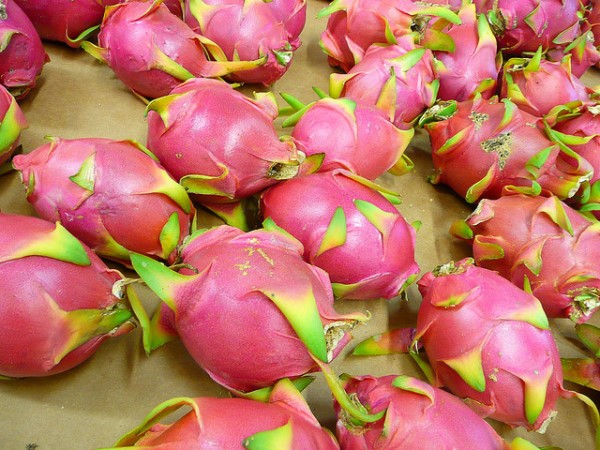
Dragon fruit comes from the Hylocereus genus—a climbing cactus plant that produces large, stunning flowers and vibrant fruits. There are several varieties, including:
- Hylocereus undatus – White flesh with pink skin (most common)
- Hylocereus costaricensis – Red flesh with pink skin
- Hylocereus megalanthus – White flesh with yellow skin
Rich in vitamin C, fiber, antioxidants, and low in calories, dragon fruit is both nutritious and visually striking, making it a rewarding plant to grow.
Step 1: Choose the Right Propagation Method
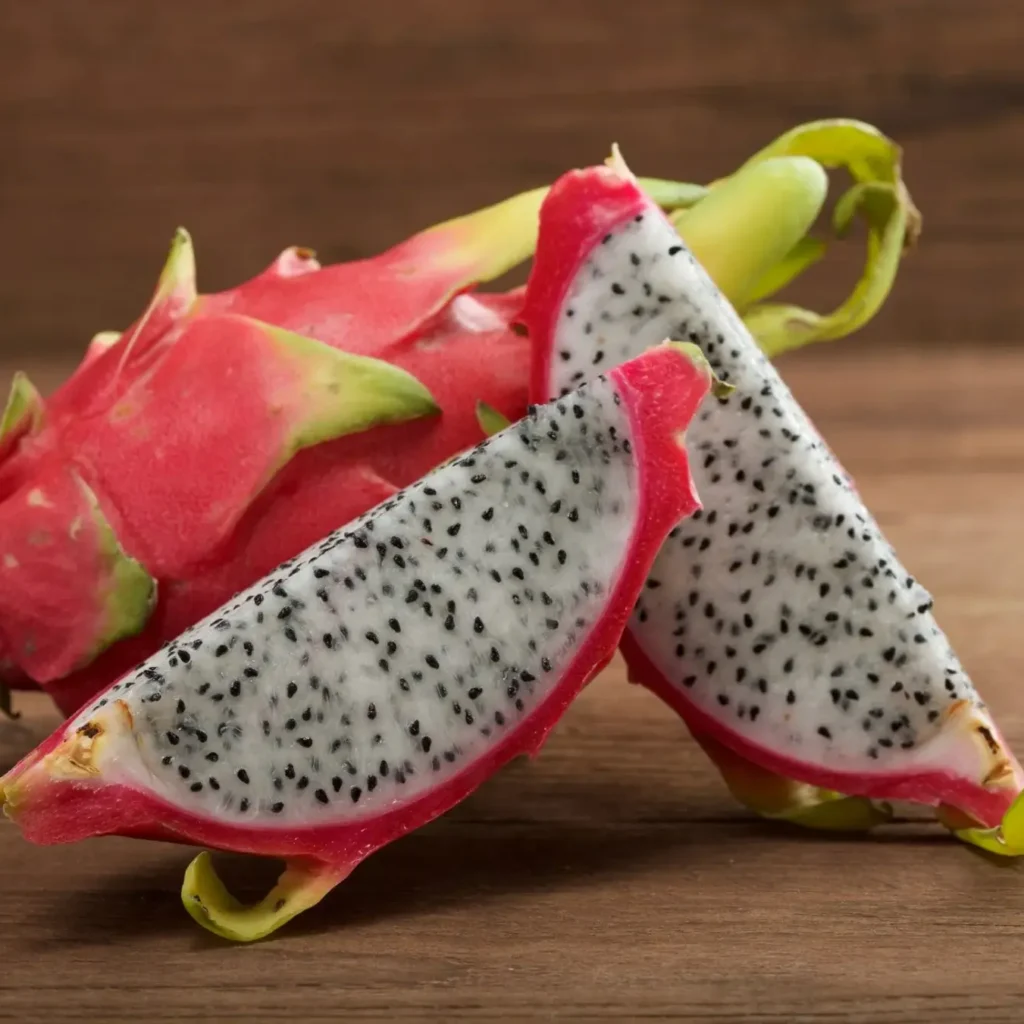
You can grow dragon fruit in two main ways:
1. From Seeds
- Suitable for patient growers
- Takes 3–5 years to bear fruit
- Great for experimenting with new varieties
2. From Cuttings (Recommended)
- Faster and more reliable
- Fruits in 1–2 years
- Ensures quality and true-to-type fruit
Tip: For beginners, cuttings are the easiest and most efficient way to grow dragon fruit.
Step 2: Selecting and Preparing the Cutting
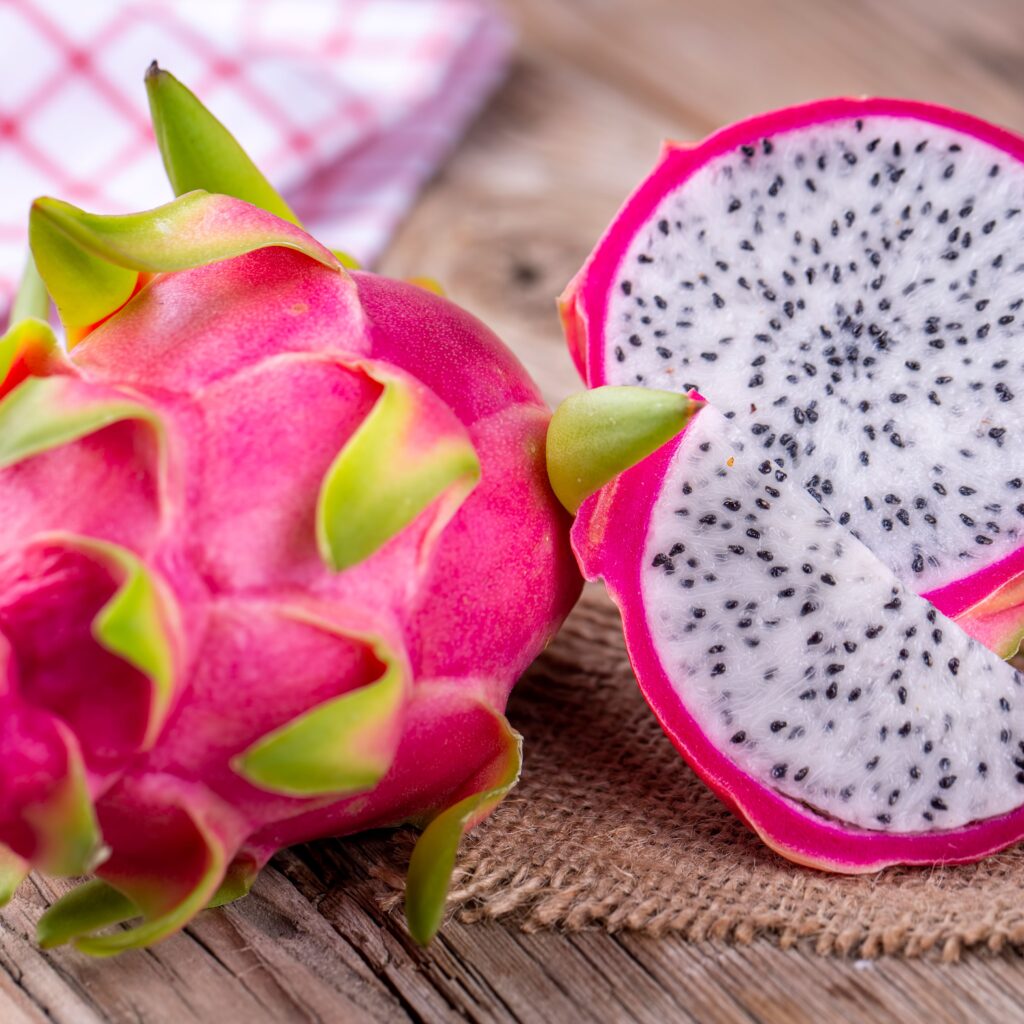
Get a healthy cutting from an existing dragon fruit plant:
- Choose a 12–15 inch long cutting from a mature, disease-free plant.
- Let the cutting dry and callous for 3–5 days in a shady area to prevent rot when planted.
Optional: Dip the cut end in rooting hormone to promote faster root development.
Step 3: Choosing the Right Pot or Garden Spot
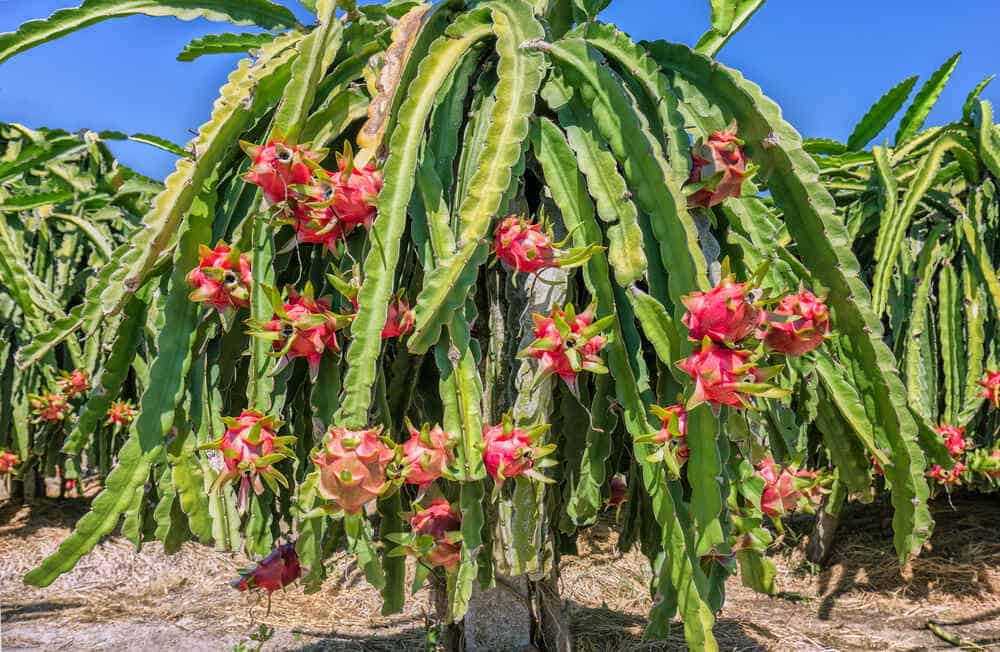
Dragon fruit needs room to grow, climb, and spread.
If Growing in a Pot:
- Choose a large, deep container (minimum 15 gallons) with drainage holes.
- Use a cactus or succulent potting mix or a well-draining homemade mix (sand + compost + perlite).
- Provide a sturdy support like a trellis, tomato cage, or wooden post. Dragon fruit vines can grow 10–20 feet long!
If Growing in the Ground:
- Pick a sunny location with 6–8 hours of direct sunlight.
- Ensure the soil is well-draining, slightly acidic to neutral (pH 6–7).
- Space multiple plants at least 3–5 feet apart.
Step 4: Planting the Cutting
Steps to Plant a Dragon Fruit Cutting:
- Fill your pot or planting hole with well-draining soil.
- Insert the calloused end of the cutting 2–3 inches into the soil.
- Firm the soil around the base.
- Lightly water to moisten the soil.
Important: Keep the soil moist (not soggy) until roots develop—typically within 2–4 weeks.
Step 5: Provide Proper Support
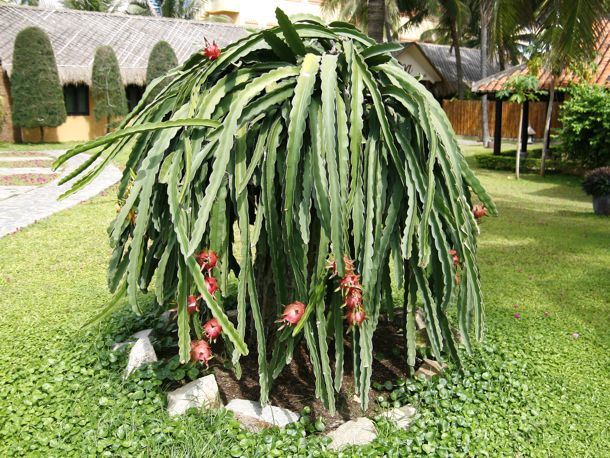
As a climbing cactus, dragon fruit needs structural support.
Support Options:
- Wooden or concrete post with a circular frame on top
- Vertical trellis or wire frame
- Tomato cage for container plants
Tie the main stem gently to the support using soft ties or garden tape. As the plant grows, continue training it upward for optimal light exposure and airflow.
Step 6: Watering and Light Requirements
Watering Tips:
- Dragon fruit is a cactus, but it loves consistent moisture (not waterlogging).
- Water when the top 1–2 inches of soil are dry.
- In hot climates, water 1–2 times per week.
- Reduce watering in cooler months.
Sunlight Needs:
- Needs at least 6 hours of full sunlight daily.
- In very hot climates, provide afternoon shade to prevent leaf scorching.
- Indoor growers should place the plant near a bright, south-facing window or use grow lights.
Step 7: Fertilizing for Healthy Growth
Dragon fruit plants are heavy feeders during their growing season.
Fertilizer Schedule:
- Apply a balanced fertilizer (10-10-10) every month during spring and summer.
- Use organic compost or worm castings to improve soil health.
- Switch to a phosphorus-rich fertilizer before blooming to encourage flower and fruit development.
Stop fertilizing during dormancy (late fall to winter).
Step 8: Flowering and Pollination
Dragon fruit plants produce large, fragrant white flowers that bloom at night and last only until early morning.
Pollination Tips:
- Some varieties are self-pollinating, while others require cross-pollination.
- If growing indoors or with only one plant, use a small paintbrush or cotton swab to transfer pollen manually from stamen to stigma.
- Bees and moths are natural pollinators outdoors.
Pollination is essential for fruit development, so be proactive if you’re not relying on nature!
Step 9: Harvesting Dragon Fruit
Dragon fruit typically ripens 30–50 days after flowering.
How to Know It’s Ready:
- Skin turns bright pink or yellow (depending on variety).
- Fruit feels slightly soft to the touch.
- Wings or flaps on the fruit begin to wither or dry out.
Use a sharp knife or pruners to cut the fruit from the vine. Enjoy fresh, in smoothies, or as a show-stopping dessert topping!
Step 10: Pruning and Maintenance
Proper care ensures healthier plants and better yields.
Pruning Tips:
- Trim excessive stems or overcrowded branches.
- Remove any damaged or diseased growth.
- Focus energy on fewer stems for stronger, fruit-bearing branches.
Pests and Diseases to Watch For:
- Aphids, mealybugs, and ants
- Fungal infections from overwatering
- Snails or slugs in humid regions
Use neem oil or insecticidal soap for pests, and always maintain good air circulation to prevent disease.
When Will Dragon Fruit Plants Start Fruiting?
- Seed-grown plants: May take 5–7 years to fruit.
- Cutting-grown plants: Usually produce fruit in 1–2 years.
With proper care, a mature dragon fruit plant can produce several rounds of fruit each year, especially in warm climates.
Benefits of Growing Dragon Fruit at Home
- Health boost: Rich in antioxidants, fiber, and vitamins.
- Eco-friendly: Reduces reliance on imported produce.
- Decorative: Stunning flowers and sculptural growth habit.
- Educational: Great way to learn about tropical plants and pollination.
Plus, it’s a conversation piece—not everyone can say they grow dragon fruit in their backyard or balcony!
Conclusion
Growing a dragon fruit plant at home may seem exotic, but it’s completely doable—even for beginners. With the right cutting, container, soil, sunlight, and care, you can enjoy watching your cactus vine evolve into a flowering, fruiting wonder.
While it requires patience, especially in the early stages, the process is rewarding and filled with excitement. Few things match the joy of harvesting your first dragon fruit—grown entirely by your hands. So go ahead, grab that cutting, set up your pot, and let nature do the rest. Your dragon fruit journey starts now!

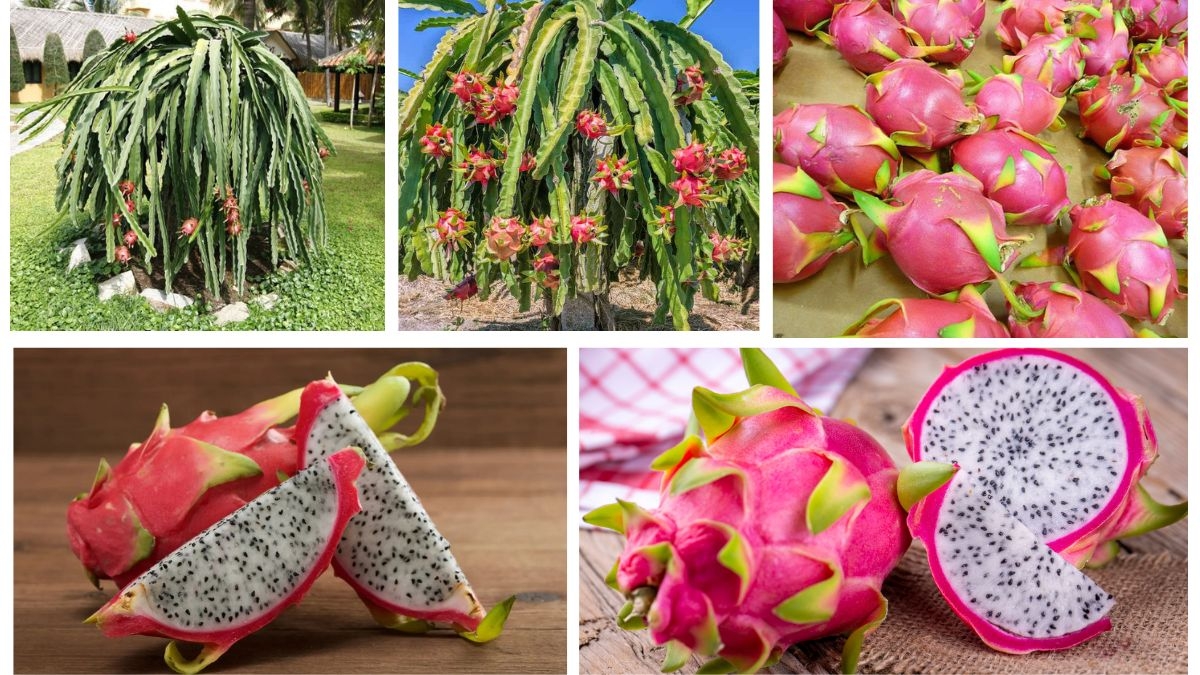



Leave A Comment